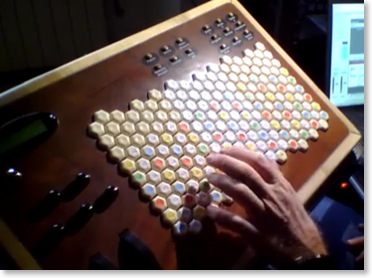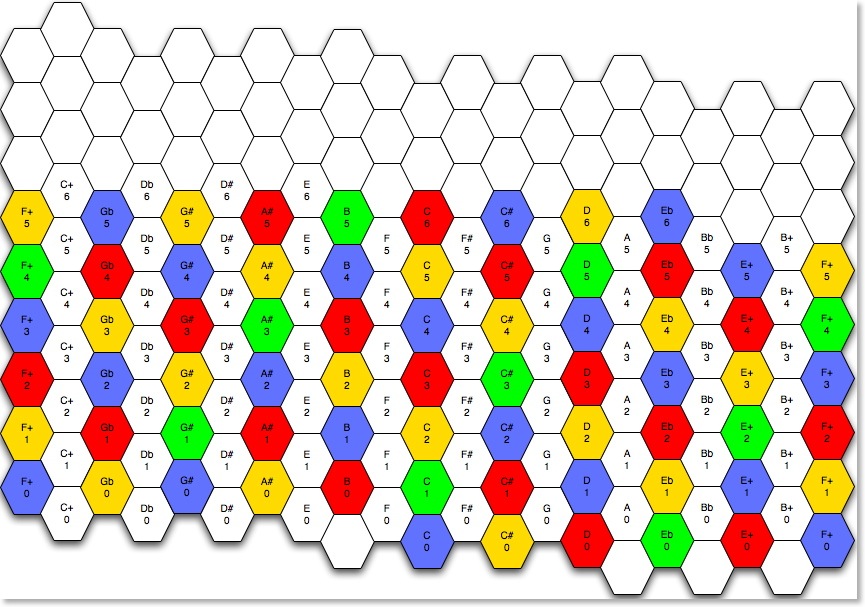“C central” note layout Version 2
I have been using the “C central” note layout for some time now and because of that I have arrived at some conclusions:
This layout for the Opal Chameleon has enabled me to have more control of Carlos Gamma but that also means I now want to try out things I have not been able to do so far, like modulating from a tonal center to other ones.
As soon as I start modulating I move beyond the limits of the Gamma mode I have been using on my digital piano that was the starting point for the above mentioned note layout (it is like comparing a diatonic harmonica with a chromatic one! ).
An isomorphic keyboard, like the Chameleon, does not prevent different fingerings for similar patterns depending on the starting point: this keyboard is like a map of the world, when you get to one edge of it, the world does not end there, it keeps unfolding on the other side of the map! This means that patterns starting near the edge of the keyboard are harder to play, than central ones, because they may develop on both edges of it, exactly like the Pacific Ocean appears on both sides of a world map centered on Europe!
Look at the following video to see what I mean (it features the new note coloring scheme I am presenting here):

click on the picture to watch the movie
All these considerations led to discard the previous note coloring pattern that I find not very useful for modulations but I decided to keep the old note scheme and this brings to the new layout I have baptized as the title of this post:


This is a note coloring scheme that alternates white and colored keys with the following pattern:
blue-white-yellow-white-red-white-green-white-red-white-blue-white-yellow-white.
It is a 14 colors pattern because it is based on the interval of 14 CGS (Carlos Gamma Steps) that equals 491.369 cents (see Tetrachordal Gamma). As you can see, keys C0 - G#0 (a 491.369 cents interval, close to a 4:3 ratio) are both blue ones. Does it help? I think it does. As it helps to quickly recognize a 4 columns interval: the key above G#0 (G#1), for example, is 1193.324 cents above C0, the closest interval to ratio 2:1 Gamma can offer.
Someone may notice that a 7 colors scheme similar to the 14 colors one shown above, would equally give alternating white and colored columns because there are 21 columns on the Chameleon. If I had chosen that scheme I would have both intervals of 7 (245.684 cents) and 14 CGS of the same color (C0 - E0 and C0 - G#0, for example) but I did not want to associate the 7 CGS interval with a root note because dissonant and that’s why I chose a 14 steps pattern instead!


